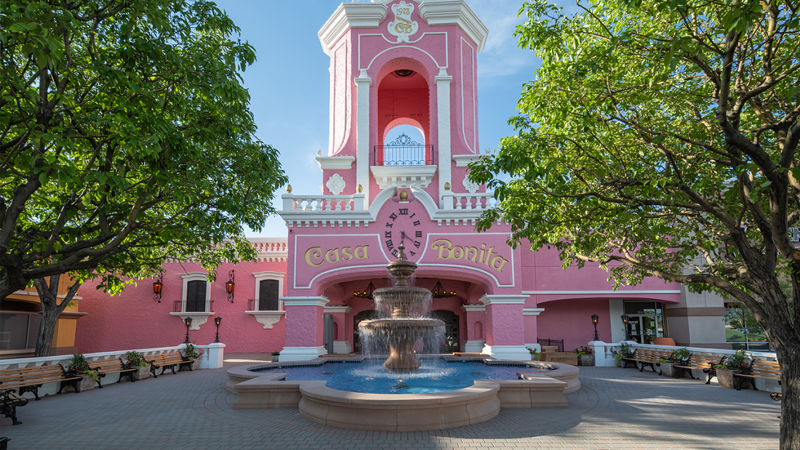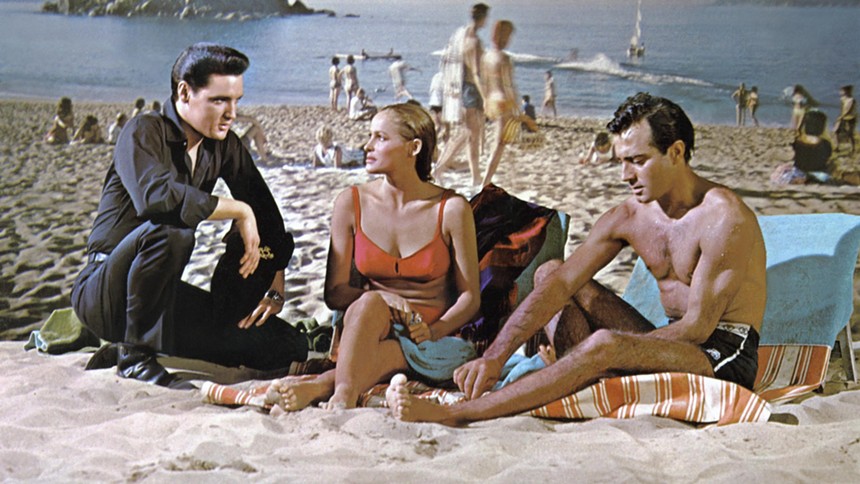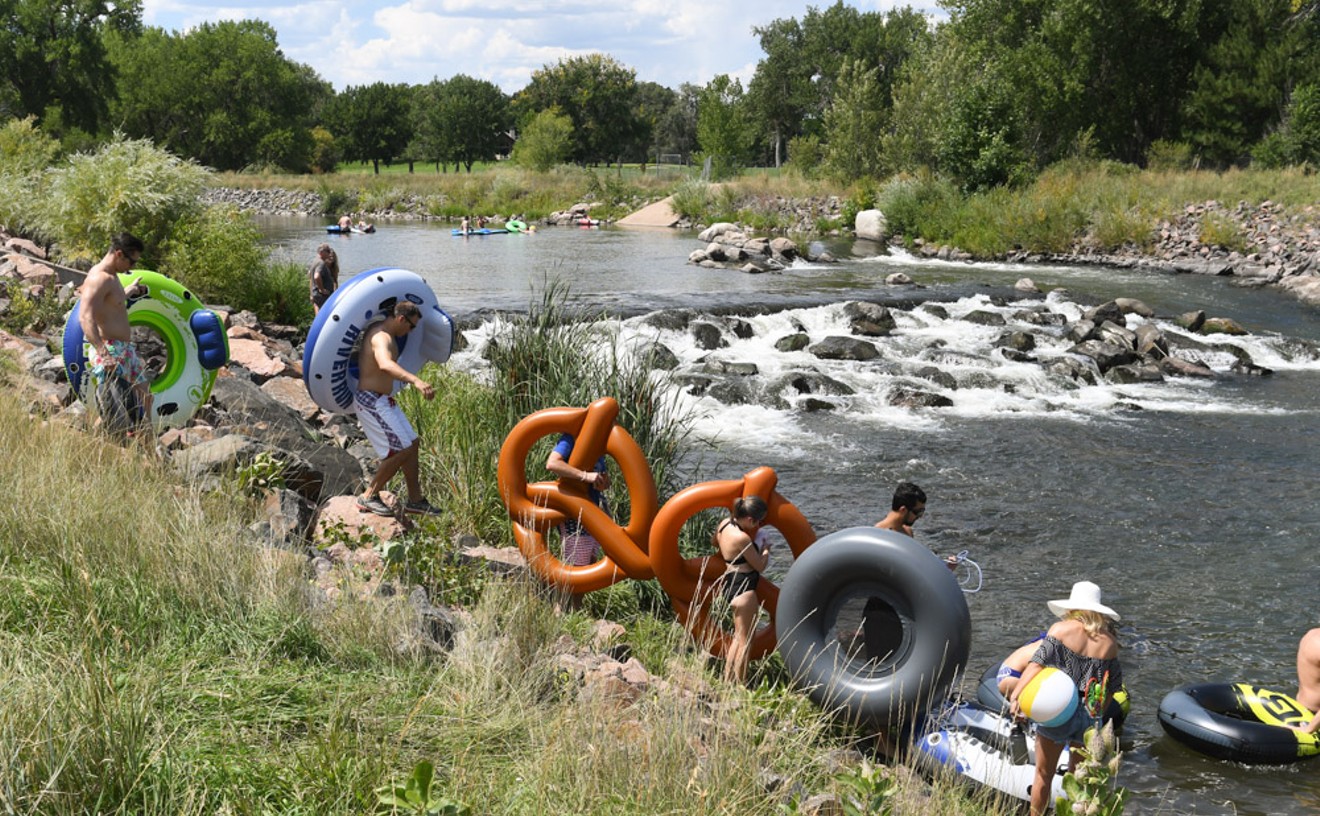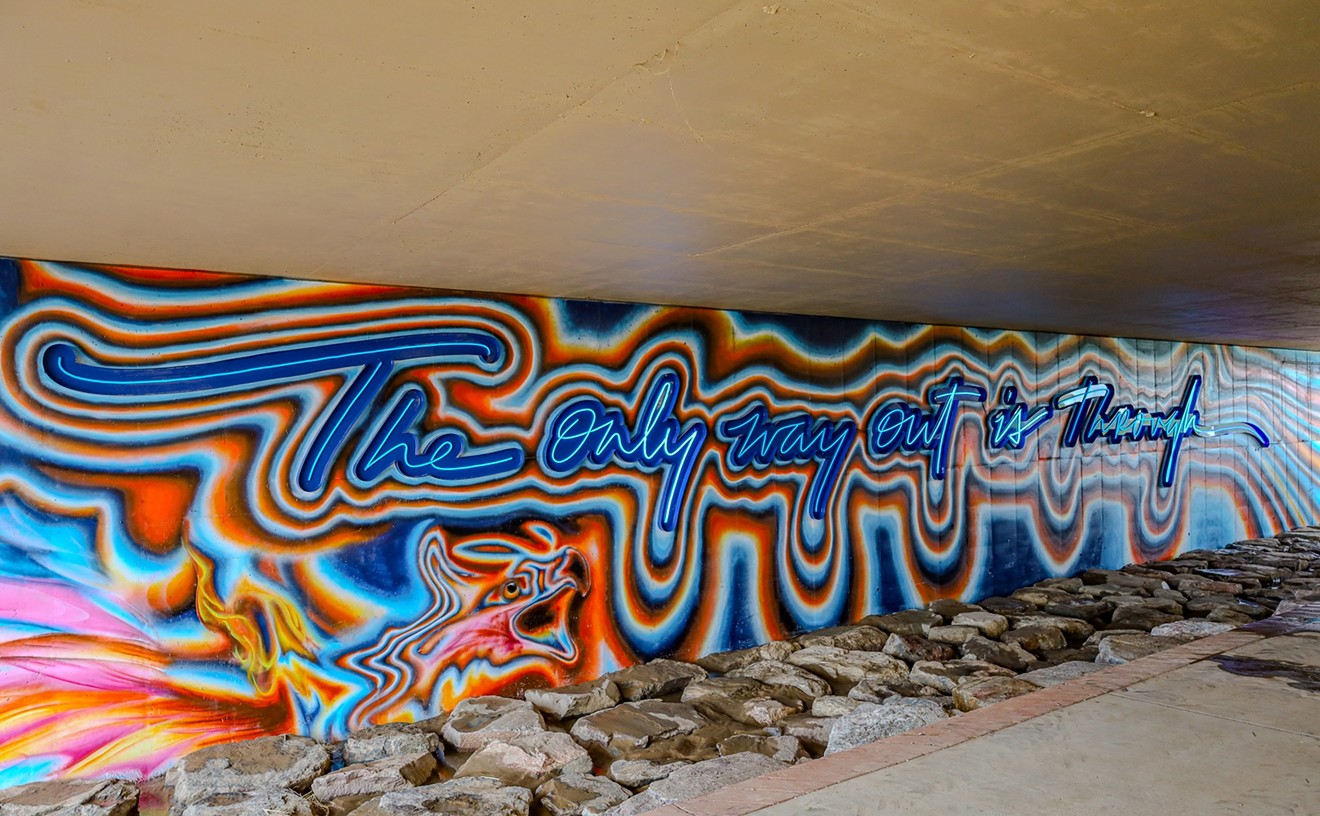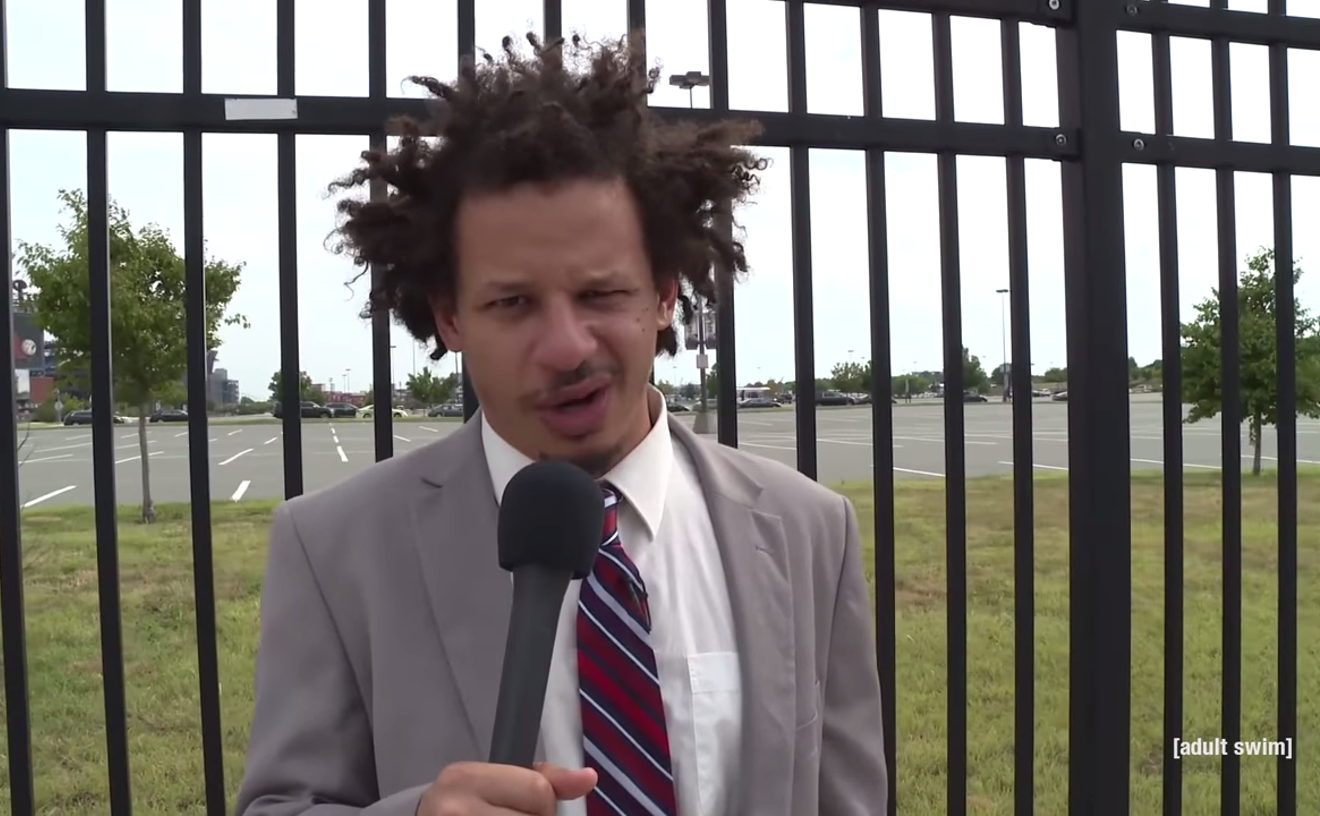Not only did they have to swim past live wires at the pool’s edge, but when divers exited, they walked dripping wet and barefoot into a room that was filled with high-voltage equipment. In the film, Casa Bonita construction manager Scott Shoemaker says, “It’s the single most dangerous thing I’ve seen in my entire life. We should call it the 'death room.'”
After shutting down Casa Bonita in March 2020 for the pandemic, owners Summit Family Restaurants filed for bankruptcy in April 2021. That September, South Park creators Trey Parker and Matt Stone, who grew up in the Denver suburbs, bought Casa Bonita at what they term a “fair” price. The news was greeted with enthusiasm — after all, if anyone could do the palace of gringo tacos justice, it was these dudes. They had introduced the restaurant at 6715 West Colfax Avenue into the annals of pop culture with their classic 2003 episode when Cartman does nearly everything he can to get invited to Kyle’s birthday party (including by disappearing wide-eyed blondie Butters in a bomb shelter), birthing the apt descriptor of Casa Bonita as the “Disneyland of Mexican restaurants,” where you could always get more sopaipillas, please.
¡CASA BONITA MI AMOR!, which had its world premiere at the Tribeca Film Festival on Friday, June 7, is about the renovation nightmare that the South Park creators found themselves in after making what both admit was a stupid decision to buy Casa Bonita and try to bring it back to life as a place where you would actually want to take your kids to eat Mexican food. It is a sometimes hilarious, sometimes heartbreaking documentary directed by Arthur Bradford. It’s also full of interesting factoids about the restaurant (who knew that its iconic color is called “dusty pink”)? It also doesn’t take itself or its subject too seriously. The audience ate it up, so to speak.
The movie raises the question of how much a person will pay to bring back childhood memories out of nostalgia. A lot, apparently. By the time the budget for the renovation has blown past the $20 million mark, it’s clear that this project isn’t about restoring a restaurant with famously gross food; it’s about restoring a childhood haven where white kids like Parker and Stone could play without parental oversight in an exotic, carefree simulation of Mexico.
The movie opens with video footage of old ads, a bit of background on the heroic purchase of the restaurant by the South Park creators, and snippets of historic images showing lines around the strip mall shortly after Casa Bonita opened in 1974 in all its garish pink glory, with a golden-domed tower topped by a statue of Cuauhtémoc, an Aztec emperor of Mexico. After their purchase, Parker and Stone visit the closed space, and Parker naively remarks that all it basically needs is new carpets. If only!
After professionals inspect the place, the reality is shocking. Over the years, Casa Bonita has been literally held together with strategically placed duct tape and dangerously rigged electrical wiring. Pigeon excrement covers the roof. The HVAC system is in dire condition. The walls are corroded. The pool is potentially lethal. It’s a fucking disaster. And what was projected to be a $4 million renovation of the 52,000-square-foot space turns out to be ten times that.
But rather than deciding to bail, Parker and Stone forge ahead. “I'd better start making some new TV shows,” Parker jokes at one point after learning about the costs — but he doesn’t look as if he’s laughing.

Trey Parker and Matt Stone at the world premiere of ¡CASA BONITA MI AMOR! at the Tribeca Festival.
Santiago Felipe/Getty Images for Paramount+
To their credit, Parker and Stone are smart enough to know that they're not really opening a Mexican restaurant, because the story of Casa Bonita is one of cultural appropriation, as well. As a Mexican American who grew up in the same suburbs as they did, my memories of Casa Bonita aren’t so jejune. In the 1980s and early 1990s in Lakewood, beaner jokes were about as common as all-night chain diners, and Casa Bonita was considered by white people as some kind of representation of Mexican culture. I even recall an elementary school field trip to the restaurant as part of an educational experience.
In a masterful move, Parker and Stone hired Mexican-born Dana Rodriguez, a James Beard finalist, to serve as the executive chef. They couldn't have found anyone with better cred: Not only can she cook and run a kitchen like a hurricane, but she got her start grinding masa for tortillas by hand as a child and was turned down for a job as a dishwasher at the original Casa Bonita shortly after moving to this country. Like the cast of characters who surround Parker and Stone in the documentary, Rodriguez comes off as supremely professional and aware that the South Park creators are in over their heads and over their budget.
In a particularly poignant sequence, she takes Parker on a trip to Oaxaca, Mexico. A frumpy protagonist with an apparent affection for Colorado-themed souvenir T-shirts, Parker awkwardly makes this journey realizing that he will never truly know Mexico, and that his memory is shaped by the 1963 Elvis feature Fun in Acapulco, with its scenes of cliff divers and the boyish singer carousing with joyful Mexicans. “This, to me, is Casa Bonita — super white dudes singing Mexican songs,” Parker says.
This is mostly Parker’s movie, and we get flashes of his childhood from old videos showing him as a kid with a fantastic head of blondish locks; we see him puttering around Casa Bonita while it’s under construction, shaking his head, looking forlorn like a beat-up Bill Murray, making jokes and trying to get a mechanical fortune-telling macaw to work. His perfectionist tendencies and erratic artistic decisions appear to drive the staff crazy. But it’s all for a good cause, Parker says — to make it a place where kids can have fun!
The documentary also reminds us how bizarre Casa Bonita was as a concept. Even the white dudes who designed the space, interviewed on camera and later showing up at a preview event, admit that it was weird. (Founder Bill Waugh, who died in 2015, is seen in archival footage, pointing out in 1989 that the restaurant was the most successful Mexican eatery in the country.) I didn’t remember that there were performers who would appear at your table and that someone in an ape costume would show up for no apparent reason; Parker and Stone brought these elements back, updated.
Bradford documents the drama behind the renovation in a no-frills style. The absurdity of the endeavor is never forced; at times it seems like he just lets his camera roll as ridiculousness occurs around him. When Coloradans go apeshit about the removal of the original fountain — news helicopters capture how it has gone missing for the evening news — Bradford shows the stunned response by the workers.
One element missing from the documentary is that Casa Bonita held down a corner of a shopping center buffeted by economic malaise; the businesses that thrived there when I was growing up were pawn shops, auto shops and pay-by-the-hour motels. Optically speaking, it wasn’t the most attractive spot for a family-friendly restaurant, but once inside, families could forget all that while they enjoyed their neo-Mexican fantasy. That Casa Bonita thrived there at all was a bit of a miracle, but then the suburbs had a flattening quality when it came to culture, and the restaurant was one of the few places a kid (especially a white one) could get away from the blahs.
One of the best scenes in the movie, which captures why so many people have fond memories of Casa Bonita, shows a child being splashed by water from the diving pool. At first he's shocked, and then he slowly grins. Parker said it was one of his favorite moments: “That kid is like, 'What the fuck just happened?'”
Even after three-plus years of renovation, the restaurant is not completely open. More than 700,000 people are still on the waiting list, Parker and Stone told the crowd. They said they plan to open it to the public later in the year, but that they are still fixing things up, and apparently investing more money in the renovation. They've considered franchising.
“We’ve talked about it, but we still haven’t got this one right, and we don’t have an extra $40 million lying around,” Stone said. (This Casa Bonita was part of a chain that got its start in Oklahoma City; it's the last one left.)
In one of the final sequences of the film, Parker is at one of the by-reservation-only openings of the restaurant, surrounded by people asking him for autographs. He looks uncomfortable, and later says to the camera that despite having rebuilt his childhood dream to his specifications, Casa Bonita isn’t a childhood refuge anymore.
“People were coming in and going, ‘Look, there’s the waterfall! Look, there’s the mines! Look, there’s Trey Parker’ — and they would come up and go, ‘Can I get a picture?,’ and it was just like, ‘I’m a distraction.' It was a really sad moment of, ‘I can’t be here.’”
By the end of the movie, I was struggling with the question of whether Casa Bonita should have been preserved at all. Maybe it should have been razed along with the rest of the shopping center and turned into much-needed affordable housing and maybe a park with a pink fountain. But over the years, the demographics of the community have changed, as more Latinos/as have moved to the area. Casa Bonita is a source of jobs for working people and of pride for Colorado. Nostalgia may be costly, but sometimes it may be worth it.
¡Más sopaipillas, por favor!

